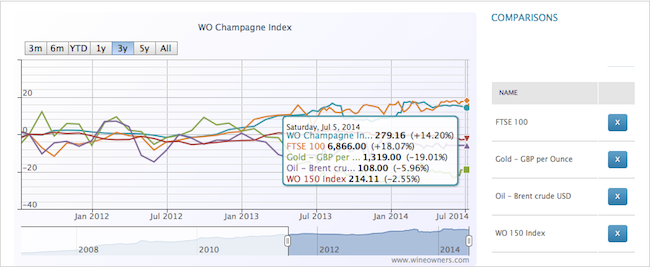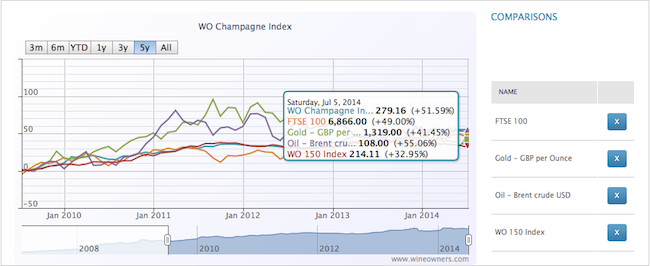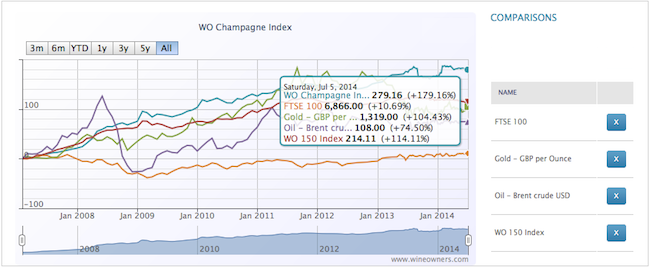by Wine Owners
Posted on 2016-08-09
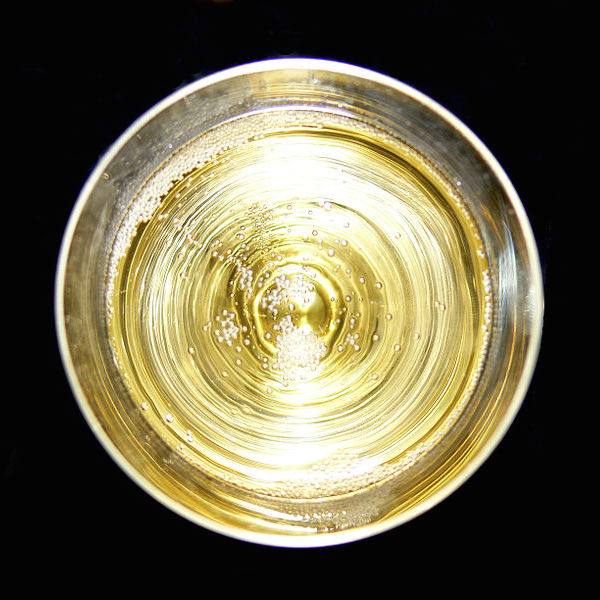
From an investment perspective champagne has delivered solid if unspectacular gains year on year, as the chart below shows. Since the start of 2011, the WO Champagne Index (pale blue line) has steadily moved up, displaying little of the volatility of the wine market at large, as represented by the WO 150 Index (purple). A 5 year increase of 55% is pretty impressive by anyone’s reckoning in this day and age.
Ask most champagne lovers to name the three most important champagne marques, and the vast majority would plump for Dom Perignon, Krug and Cristal – let’s call them the Three Musketeers. These are by far the most likely to be found in collections, and have international standing as the benchmark for top quality, premium fizz. My question is that if we assume most collectors will hold at least one, if not all three, of these in their cellars if they are champagne followers, which champagne is best placed to play the role of d’Artagnan to their Porthos, Aramis and Athos?
There are several pretenders to the throne. Bollinger RD, Perrier Jouet Belle Epoque, Pol Roger Winston Churchill, Armand de Brignac Ace of Spades – these and a host of others are a match for the quality and cachet of the Three Musketeers, but there is one name that I think stands out, and one whose financial performance and quality cannot easily be overlooked.
That wine is Salon ‘Cuvee S’ Le Mesnil. Despite its relative anonymity – there are many better known marques – this champagne is viewed as the apogee of champagne making by those in the know. Ruthlessly (almost self-defeatingly!) small production quantities and a quality control regime that makes North Korea look like a hippy commune have enabled Salon ‘Cuvee S’ to reach prices that are eye-wateringly expensive across the board. Despite this its prices have moved up more dramatically that most champagnes for vintages from the 1990s, and even more recent vintages from the 2000s have shown growth despite much higher release prices.
So, if you can find it at the right price, Salon ‘Cuvee S’ is perfectly placed to play the role of the Fourth Musketeer. All for one, and one for all…
by Wine Owners
Posted on 2015-02-16
The turning point for fine Bordeaux was August of last year. By early October it was unclear whether the tick-up was yet another of those blips we’d seen several of during the previous 24 months.
Today it is clearer: the trend is up, most wines are well off their lows, and the Bordeaux Index overall is 2.17% up on 6 months ago.
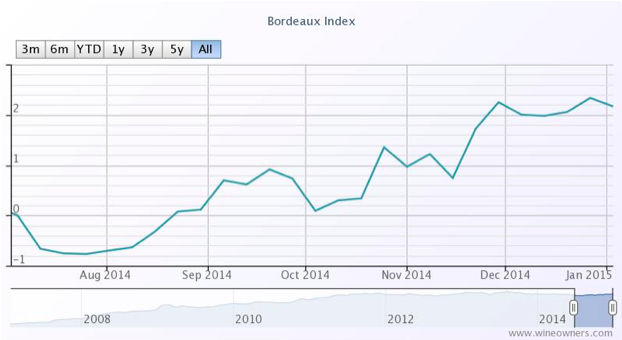
The exception is the Libournais index covering Pomerol and St Emilion, which has slipped 0.48%, a reversing the gains of 1.24% between early October and the end of November last year.
The Medoc Classed Growths are collectively up 2.77% form their August 9th 2014 lows.
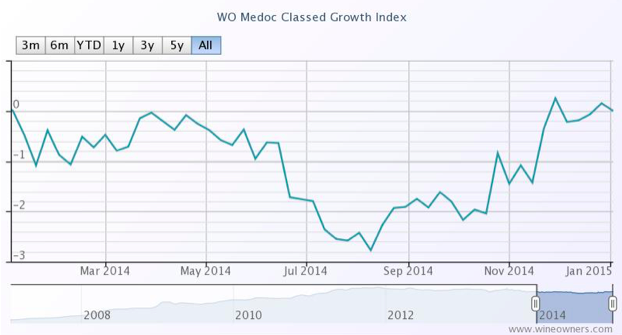
Whereas the First Growths only managed 1.51% during the same period. Not entirely surprising since top vintages are still highly priced, they have had further to fall, making it hard to call bottom, and started picking up momentum in January 2015. What is clearer is that wines such as Haut Brion 2008 appear to be interesting propositions.
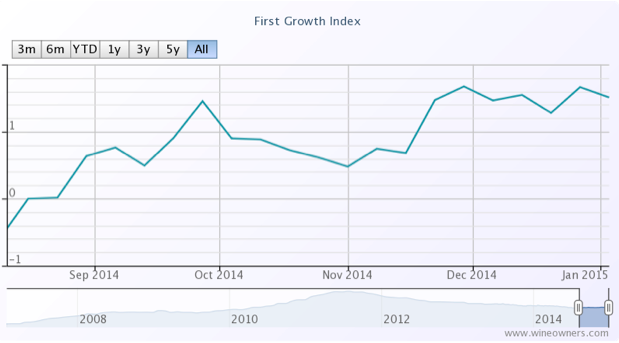
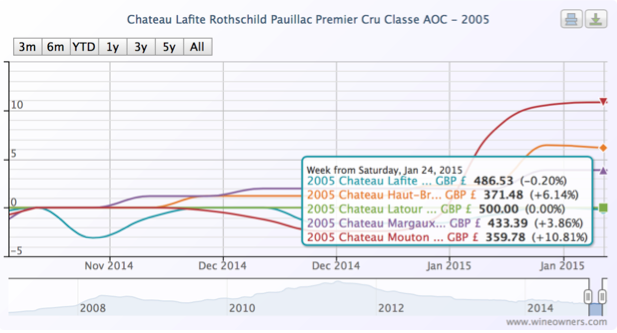
Elsewhere the Blue Chip Burgundy Index continues to power ahead, though within that there are notable, and expensive, fallers (last 12 months):
| Domaine de la Romanee-Conti Le Montrachet Grand Cru AOC |
2010 |
-7.16 |
| Domaine Ponsot Charmes Chambertin Cuvee des Merles Grand Cru AOP |
2010 |
-7.69 |
| Domaine Armand Rousseau Mazis-Chambertin Grand Cru AOC |
2010 |
-7.89 |
| Domaine Jean Grivot Richebourg Grand Cru AOC |
2007 |
-9.43 |
| Domaine de la Romanee-Conti Romanee Saint Vivant Grand Cru AOC |
2010 |
-10.71 |
| Domaine Jean Grivot Echezeaux Grand Cru AOC |
2002 |
-11.2 |
| Domaine Leflaive Batard-Montrachet Grand Cru AOC |
2006 |
-13.15 |
| Sylvain Cathiard Vosne Romanee En Orveaux Premier Cru AOC |
2010 |
-13.69 |
| Domaine Comte Georges de Vogue Chambolle Musigny Les Amoureuses Premier Cru AOC |
2002 |
-13.7 |
| Domaine de la Romanee-Conti La Tache Monopole Grand Cru AOC |
2010 |
-15.38 |
| Domaine Armand Rousseau Clos de la Roche Grand Cru AOC |
2010 |
-16.08 |
| Domaine Leflaive Batard-Montrachet Grand Cru AOC |
2005 |
-16.18 |
| Domaine Jean-Francois Coche-Dury Corton-Charlemagne Grand Cru AOC |
2006 |
-16.35 |
| Domaine Leflaive Chevalier-Montrachet Grand Cru AOC |
2005 |
-16.67 |
| Domaine Leflaive Le Montrachet Grand Cru AOC |
2008 |
-20 |
| Domaine Leflaive Le Montrachet Grand Cru AOC |
2006 |
-20.16 |
| Domaine Leflaive Le Montrachet Grand Cru AOC |
2005 |
-21.94 |
Northern Italy is up 1.42%, with Giacomo Conterno one again heading the leaderboard
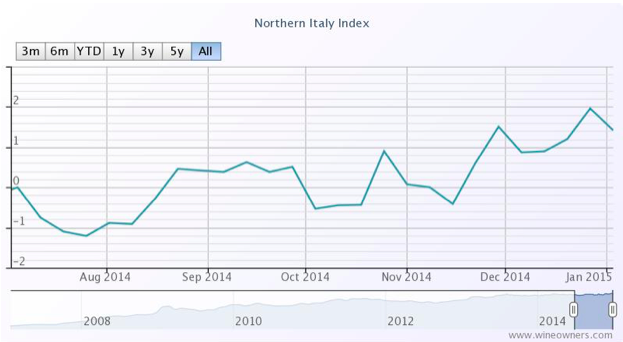
Champagne has defied our predictions in gaining a whopping 7.42% over the last 6 months, the top risers comprising exclusively older vintages in the range 1996-2002. This makes a lot of sense. Millions of bottles of top cuvees such as Dom Perignon (up to 8M bottles per annum) means that values kick up only when supply and demand becomes more balanced.
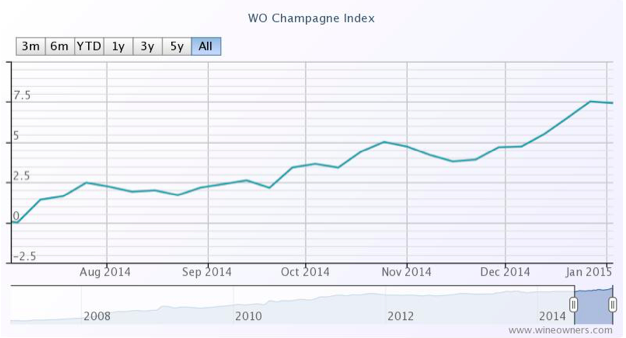
We also thought Californian wines would moderate their growth this year. Comparative to Bordeaux prices, they seem expensive. Since January they have indeed dipped -0.65%, off the back of six month growth of 6.65% up until that point. It’s too early to say whether they are simply pausing for breath, or have reached a natural plateau. The trend line favours the first scenario.
by Wine Owners
Posted on 2014-10-17
Treasure assets are uncorrelated. That’s part of the attraction to high net worth individuals (HNWIs) looking for suitable stores of value.
I use the phrase store of value purposefully. Wealth preservation and enjoyment of the fruits of success are arguably far more important to HNWIs than specific targeted annual returns.
Wine has appeared deeply uncorrelated since the financial crisis of 2008. The facts bear that out. Yet we mustn’t forget the power of externalities to distort underlying tendencies; such as insatiable demand from China up until mid-2011, or the flight from traditional financial instruments during periods of extreme market stress into all things tangible. It’s easy to forget that the wine market did suffer during previous economic recessions or shocks, whether the recession of the early 1990s or the Asian financial crisis of 1997.
Yes, of course we’re talking principally about Bordeaux, that behemoth of a region that produces unrivalled oodles of fine red wine. Paradoxically other regions of production may indeed be uncorrelated with Classed Growth Bordeaux as hot wine money searches for relative value, or where scarcity creates a rather different drumbeat.
With the current financial market turmoil; the sudden reawakening to the woes of Europe; the economic and political uncertainty of its recession-hit member states - what better moment to analyse the question of market correlation?
The wine market became quite excited by a small upturn that started in late July, continued during August and through much of September. A month on, and things aren’t quite so clear-cut, but in spite of plummeting stock markets, wine prices are not following suit.
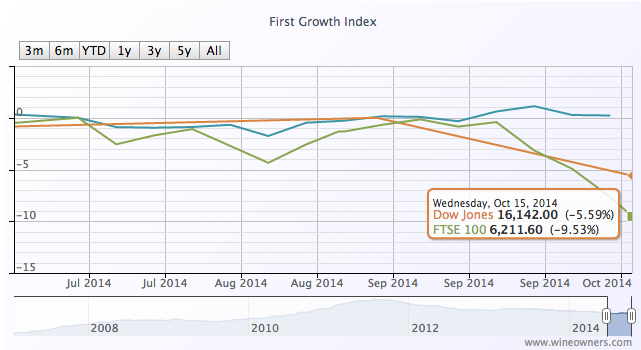
The First Growth Index is up by 1.2% over the last 3 months whilst the FTSE has dived almost 8% - that’s roughly the same amount of value destruction as the First Growths experienced over the previous 12 months. The Bordeaux Index has followed the same positive (if tentative) trajectory (comprising Medoc and Graves Classed Growths and the top Libournais benchmarks). So has Northern Italy, only a whisker off its all-time highs, along with blue chip Burgundy and the effervescent Champagne market.
After a disappointing year so far for the wine market overall (represented by the WO 150 Index), the previously run-away Dow is within single-digit, fingertip distance of fine wine’s -2.7% fall.
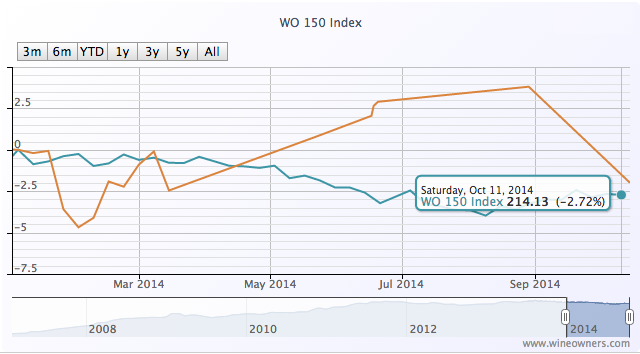
by Wine Owners
Posted on 2014-07-14
The performance of the Wine Owners Champagne Index has been nothing short of stellar - outperforming most other assets over the last 3, 5 and 7 years.
Over the last 12 months, however, the index has stagnated, registering a measly 0.5% growth.
Much was said of Champagne as an investment during the course of 2013. In sharp contrast to other fine wine regions, production quantities tend to be vast, but so is consumption. Analysing the performance of the Champagne market shows that appreciation is entirely driven by the very top vintages. With no stellar vintage such as 1996 or 2002 due for imminent release, we said in the first quarter of 2014 that the vintage Champagne market may drift over the next 1-2 years, though very top back-vintages may well benefit as supply dries up, and Champagne styles suited for long ageing such as Salon may continue to firm.
6 months on, this has indeed proved to be the case, with the top performers over the last 12 months to July 2014 being Jacques Selosse Blanc de Blancs Millésimé 1996 (+40%), Krug Clos de Mesnil Blac de Blancs 1996 (+28%) and Salon Cuveé ’S’ Le Mesmil Blanc de Blancs 1996 (+16.5%). This shows the value of relative scarcity, age and a top vintage - the perfect combination for future returns in a market otherwise dominated by exceptionally high volume production.
The poorest performers over 12 months have been Taittinger Contes de Champagne Blanc de Blancs 1996 (-9%) and 1998 (-28%), along with Dom Perignon 1998 (-11%).
